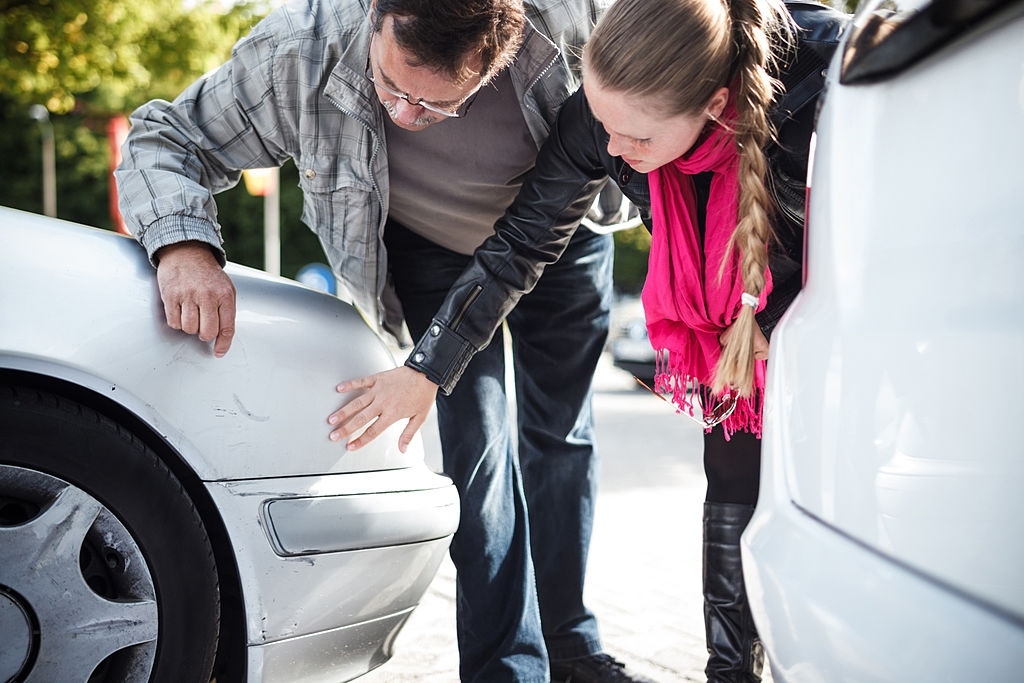Accidents can happen all too easily; and, if not handled properly, the situation can quickly spin out of control.
Imagine that you find yourself in this scenario:
While behind the wheel, you misjudge the space between your car and the one in front of you when making a turn in close traffic. You tap the rear bumper of the car in front of you. The other driver gets out of their car to inspect the bumper. They appear to be unhurt, and you don’t see any noteworthy damage to the car either. The other driver tells you to forget about the incident. You agree and go on your merry way.
Fast forward to a few weeks after that minor accident. You have just received news from your insurance company that you are being sued by that person for lost wages, neck injuries, as well as pain and suffering.
How is this possible? Everything was fine when you left the scene. Where did you go wrong?
Your first thought might be: “I should have called the police.” But you shouldn’t beat yourself up for skipping this step. In reality, the police in some jurisdictions will not respond to a call regarding a car accident unless there are injuries. In California, for example, the police should not be called to the scene of an accident that does not result in damages greater than $1,000 or any injuries. You can file a report later.
Thankfully, calling the police is not your only option. There are things you could have done to avoid the kind of mess described above. Fender-benders – or even smaller collisions – don’t have to spiral out of control like this if you take the appropriate precautions and steps.
Taking the steps below you can help you to better protect yourself from false claims and help your insurance company reach the best decisions:
1. Follow the law
This means always carry your driver’s license, registration and insurance information. Be sure all family drivers have this information every time they get behind the wheel.
2. Take Pictures
Thankfully, most phones have cameras now. This makes snapping pictures at the scene of an accident a breeze.
In addition to taking snapshots of your car, take pictures of the other vehicle and all of the car’s occupants. Preferably, you should take these photos while they are still in the vehicle – or at least while they are all still at the scene. This step can thwart a fraud scheme called ‘jump ins.’ ‘Jump ins’ happen when people associated with the claimant come forward and say they were also in the car and suffered injuries in an attempt to get a bigger settlement,
Don’t focus solely on the cars and the people. Take pictures of the site of the accident. Having photos of the cars on location can help you make your own case to the claims adjuster.
Be sure to write down the specifics of the location as well. For example, you may want to jot down something like: “The southwest corner of Bank and Broad streets, about three car lengths before the mailbox.”
3. Get witnesses’ information
If there are witnesses, get their names and addresses. Some may be reluctant to provide their information. But it is in your best interest to be persistent, within reason. Most people will be happy to help.
4. Exchange information
Exchange information with the other driver. The information you need to ask for includes:
- Name
- Address
- Phone number
- Driver’s license number
- Name of the other driver’s insurance company
- Policy number
- License plate number
If the driver is not the person named on the insurance card, find out what the relationship is between the driver and that person. They may be a family member, a friend, or even an employee. Write that information down. Also be sure to write down the policyholder’s name, address and phone information.
Finally, write down a complete description of the other car:
- Year
- Make
- Model
- Color
5. Choose Your Words Carefully
Under no circumstances should you ever admit fault to the other driver. Even if you think it was your fault, you should never say so. Remember, anything you say can, and likely will, be used against you in court. If necessary, plead the fifth amendment: the right to remain silent.
Something to Think About
Unfortunately, there are people who stage accidents for the payoff. It’s possible that you could have been set up to find yourself in an unavoidable collision. Even if it was a bona fide accident, it is in your best interest to let the experts determine blame – or lack thereof – when they work out the insurance compensation.





